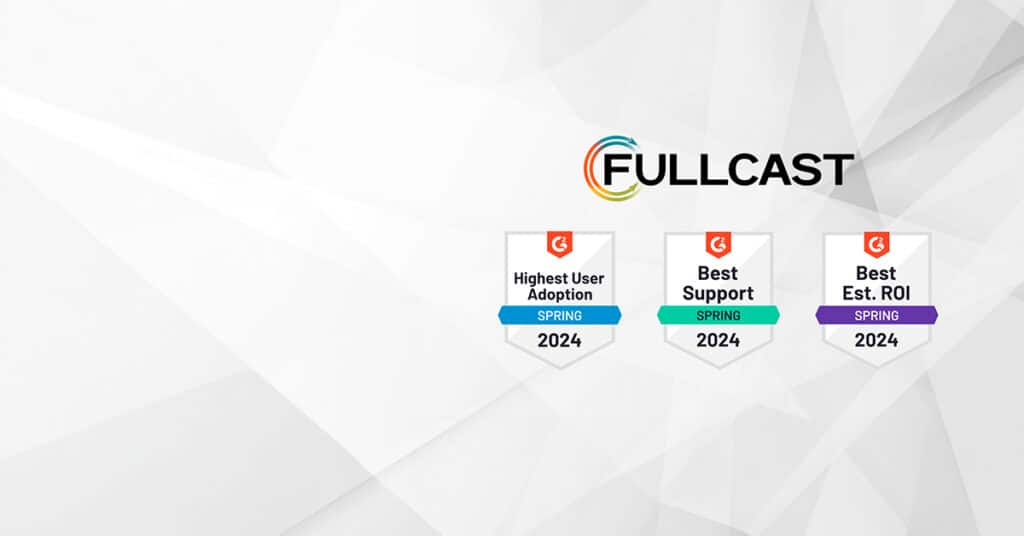Sales and IT may feel like they are worlds apart, but these two critical teams need to be able to work together successfully to transform your GTM plan into a reality. On a recent episode of our Fireside Chat series, we sat down with our co-founder and CTO Bala Balabaskaran to learn more about the common misunderstandings and miscommunications that occur between IT and sales and what steps companies can take to minimize friction and help these two very different teams collaborate effectively.
The relationship between the Sales and IT sides of a business can be a confusing one, where expectation mismatches and misunderstandings are common. The sales team often doesn’t fully grasp what they can reasonably expect from IT (and what constitutes a reasonable timeframe), and IT teams are often left in the dark without clear directions or scoping requirements, or even a comprehensive idea of what the core problem is.
The Root of the Disconnect
This disconnect isn’t the fault of either side, but that doesn’t mean that both sides don’t need to work together to address this miscommunication gap. To do this, we need to look at the relationship between these two parties and the dynamics that drive them. Sales is, by nature, extremely volatile because it is constantly trying to stay ahead of the curve while responding to market scenarios and updating and adjusting requirements on the fly.
Sales Forecasting Needs a System that Handles Exceptions
Sales forecasting aims to predict these changes. Though good sales forecasting methods generally take a systematic approach, there are still many exceptions that need to be considered. As such, sales relies on a forecasting system that can take these exceptions into account.
For example, say you build your GTM model on employee size, but you have a situation where one of your sales reps knows the CEO of a potential client company personally. That company may fall slightly outside of the employee size rules imposed by your system, but obviously, this is a situation where you are going to ignore those rules and try to close a deal with that company. Sales needs a system like Fullcast that is flexible enough to handle exceptions like that.
IT Wants Stability, but Sales is Inherently Volatile
From an IT perspective, this exception-ridden, constantly evolving approach is incredibly difficult to accommodate. Even for the most agile IT team, stable requirements are the foundation of development. The team gets the requirements, they scope out the lead time to build out the different aspects of the platform to meet those requirements, and then they put all the pieces together. However, because sales is so volatile, the requirements may have changed by the time IT has finished the build.
In IT, a six-month-long project is perfectly normal, but from a sales perspective, six months might as well be a lifetime because the market changes so quickly. This often leads to scenarios where IT has built a platform that relies on the original requirements and sent it off to sales, only for sales to come back and tell IT that the business has moved on and they need a ton of new functionality to support their efforts, causing IT to scramble to accommodate and potentially breeding resentment on both sides of the table.
This is where the mismatch occurs: Sales expects a platform that is flexible and agile enough to accommodate exceptions to the rules and rapidly adjust to the changing market landscape, while IT is depending on stable requirements and can become frustrated when the requirements are constantly changing.
Who is Responsible for Salesforce? Two Common Challenges
Another common scenario Bala encounters is where CRMs such as Salesforce are primarily used by one team (sales) but managed by a different team (IT). Situations like this pose two main challenges that all organizations need to address.
Are You Treating Your CRM as an Enterprise System or Not?
You need to manage the pull from sales to keep things flexible and balance it against the push from IT to keep things organized. In some cases, IT may tell sales they have full reign within Salesforce (as long as nothing they do breaks the integrations between Salesforce and other platforms or the overarching IT architecture). This sounds like it would work, but salespeople aren’t trained to keep their CRM or other platforms organized, which can result in bad data quality and a messy implementation.
On the other side, if IT is left to manage the CRM, it can take forever for sales to get any changes made because updating Salesforce is just one list of many competing priorities IT is dealing with. This leaves IT frustrated because they are constantly being bombarded with tickets from sales, and it leaves sales frustrated because they need to wait for IT to get to their ticket before they can move forward and get the data they need to do their jobs, build customer relationships, and close deals.
To avoid scenarios like this, you really need to consider the enterprise elements of Salesforce and treat it like an enterprise system and set it up in such a way that sales can get the flexibility and exception-handling they need to remain agile while leaning on the data organization and storage best practices IT brings to the table.
An Ad Hoc Approach to Tool Purchases Causes Resentment & Frustration on Both Sides
Another problem Bala regularly encounters is the lack of a unified architecture: each team works in a silo, buying the tools and programs they need without considering how they will interact with all the tools and programs currently in place.
So when sales buys a ton of different tools designed to resolve all their different problems and IT isn’t consulted or brought in to help, which means sales is left to figure out how to manually integrate these tools on their own, a skill set most salespeople simply don’t have. This means that sometimes sales will integrate a tool and inadvertently break something else in the build. IT is angry because sales broke the overarching architecture build, but sales is angry because they had to purchase and integrate these tools themselves because IT takes too long to make the changes they need, causing headaches and breeding resentment on both sides.
This ad hoc, cobbled together approach creates silos even within teams, where information isn’t able to flow freely between tools and everyone is afraid to make necessary changes to the infrastructure because doing so could inadvertently break something else like a giant, precarious game of Jenga. It’s like buying individual car parts and hoping you can use them to build a fully functional car instead of just going to the car dealership and purchasing a car: not all the pieces are going to work together well, it is probably going to cost you more over the long run (both from a budgetary perspective and a productivity perspective), and in the end, your car might not even work, let alone work as well as a professionally built one.
As a workaround, sales teams often rely on Google or Excel sheets to map out and track all of the various tools and how they interact with one another so the whole team can avoid breaking the system every time they want to add a new field to an account. As such, the sales team ends up spending huge swaths of time trying to figure out if any particular change will break the whole system instead of focusing on prospecting, building client relationships, and closing deals.
This is an inherently reactive approach. Investing in a full-service platform like Fullcast can help you approach these issues proactively through a holistic lens. Without a holistic approach, your sales team is going to spend a lot of time putting out fires and addressing immediate issues instead of focusing on their jobs, potentially impacting the long-term health of your company.
Single Source of Truth vs. Up-to-Date Information: Another Source of Tension
Another common source of tension between IT and sales revolves around the idea of a single source of truth. IT thrives on having a single source of truth. Most salespeople aren’t particularly concerned with a single source of truth as they go about their daily tasks simply because the data is changing so rapidly. From a sales perspective, a single source of truth is really only critical when a new rep takes over an account and needs a starting point.
Many organizations approach this issue from an IT perspective and takes the single source of truth approach, but this often leaves sales either working with out-of-date information or simply ignoring the “official” data and continuing to gather the most up to date data as they need it.
Sales Ops Bridges the Gap
So how are companies supposed to bridge this gap between sales and IT? This is where sales ops, sometimes called the shadow IT team, comes in. Sales ops allows IT to focus on longer-term projects while supporting the rest of the sales team by adding new functionality or adjusting the platform as needed to ensure it continues to support your sales managers and sales reps effectively.
Salesforce is Not a Planning Tool
Another big disconnect between sales and IT revolves around how data quality is calculated, and the impact of the data on the sales reps. Salesforce is, by design, a transactional system, not a planning tool: it can’t help you predict the market; it only shows you a snapshot of what the market is doing at this exact moment in time. Salesforce is a great tool for gathering the most up-to-date data, but that information needs to be cleaned and fed into a separate planning system such as Fullcast.
IT doesn’t always realize this, so it falls on sales to tell them what they really need in terms of data and how the data needs to be cleaned up. Ideally, IT would automate this process so sales reps aren’t spending time manually cleaning their data.
Sales ops can help address this issue by:
- Creating clearly understood data policies and cleaning procedures.
- Communicating sales needs to IT so as many processes as possible can be automated (saving reps time).
- Ensuring that the sales team isn’t inadvertently violating their own data policies.
Sales ops can also communicate with IT to keep them in the loop on the sales planning process, so they can get an idea of the thought processes behind the GTM strategy and give them as much lead time as possible on any changes or other IT requests.
How Can Fullcast Help?
Fullcast can’t help your IT and sales teams communicate better, but it can help you say goodbye to your spreadsheets and mismatched pile of sales tools and organize your data in an easy-to-use format. This reduces the amount of time your IT team spends organizing and cleaning your data and allows your sales team to quickly and easily access the most up-to-date data.
Seamlessly Integrates with Your CRM
Fullcast interfaces directly with CRMs like Salesforce, Microsoft Dynamics, and Freshworks, so your sales reps are always working with the most up-to-date information.
Self-Serve Puts Your Sales Managers in the Driver’s Seat
Fullcast’s self-service model allows your sales managers to quickly and easily make changes to your platform; no coding experience required. This frees up your IT team so they can focus on tasks that grow your business and helps your sales team remain agile so they can quickly and easily adjust their sales strategy to take advantage of current market trends.
Model the Impact of Changes
Fullcast is designed to let you quickly and easily model the impact of changes, so you can find out in advance if a particular move will impact other areas of your business.
Want to make both your sales and IT teams happy? Book your demo today!











